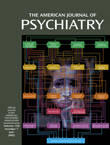Temporal Lobe Abnormalities in First-Episode Psychosis
Abstract
OBJECTIVE: The nature and time course of temporal lobe abnormalities in psychotic illness remain controversial. Confounds include disease chronicity, gender, and handedness. The present study investigated temporal substructures in right-handed male patients experiencing their first episode of psychotic illness. METHOD: Magnetic resonance imaging scans were obtained for 25 minimally treated patients experiencing their first psychotic episode and 16 healthy comparison subjects. Group differences in volumes of the hippocampus, amygdala, planum temporale, and Heschl’s gyrus were tested. RESULTS: The patients had smaller bilateral hippocampal and left planum temporale volumes than the comparison subjects. Paranoid and nonparanoid patients differed in left amygdala volume. CONCLUSIONS: The authors conclude that bilateral hippocampal and left planum temporale abnormalities are present near the onset of psychosis.



